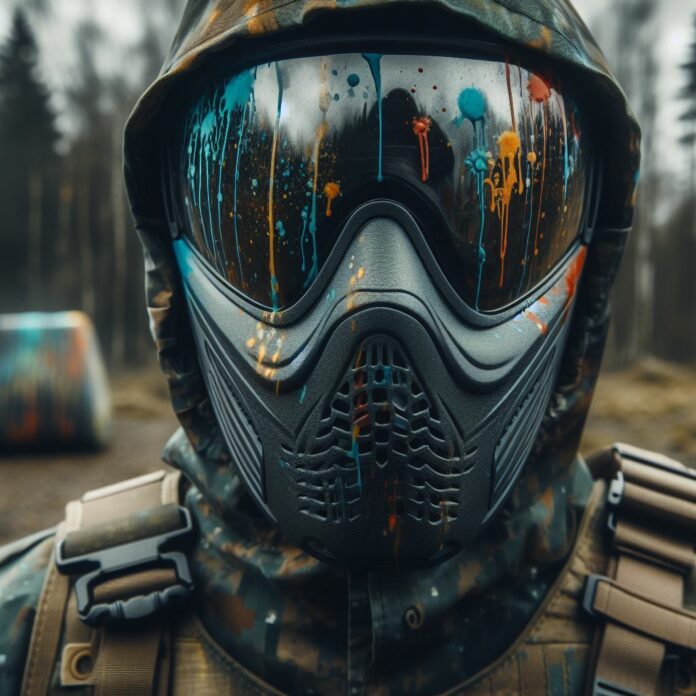Paintball is an exciting and thrilling team sport that involves players competing against each other using air guns, called markers, to shoot capsules filled with paint. While it can be a fun and adrenaline-filled experience, there is always a potential for injuries in any physical activity.
While paintball is generally a safe sport, getting injured playing paintball can still occur. It is essential to address the common concerns regarding the potential for injuries in paintball.
Are injuries common in paintball? What types of injuries can occur? Understanding the nature and extent of injuries associated with the sport will provide valuable insights into the risks involved.
Multiple factors can affect the risk of injury in paintball. These factors include the quality and proper use of protective gear and equipment, the playing environment and field setup, and the behavior of players in adhering to safety rules.
By understanding these factors, players can take necessary precautions to mitigate the risk of injuries. Preventing injuries in paintball is crucial.
In the event of an injury, it is important to know what to do. This article will also provide information on common paintball injuries and first aid tips that can be administered on-site.
Seeking professional medical attention for more severe injuries and understanding when it is necessary will also be discussed.
By understanding the potential for injuries in paintball, taking necessary precautions, and knowing what to do in case of an injury, players can engage in this thrilling sport with confidence while prioritizing their safety and well-being.
Understanding the Nature of Paintball
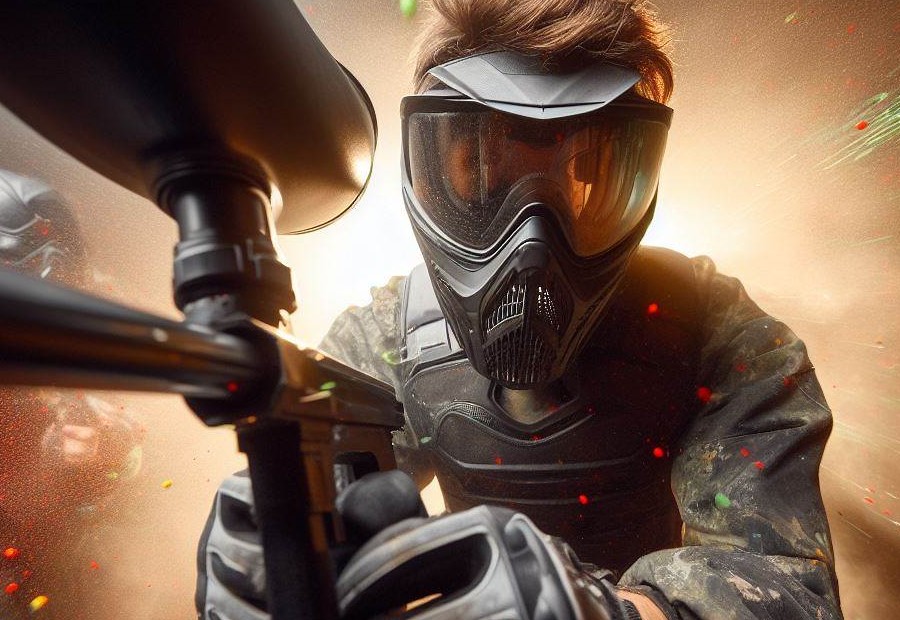
Paintball is an exciting and active sport that involves strategy, teamwork, and precision shooting. Understanding the nature of paintball is important to fully enjoy and participate in the game.
- Paintball is a non-lethal sport where players use compressed air or CO2-powered markers to shoot biodegradable paintballs at each other.
- The objective is to eliminate opponents by marking them with paint, typically on a specialized field with various obstacles and hiding spots.
- Players must wear protective gear, including masks, to ensure safety and prevent injuries to the face and eyes.
- The game requires physical exertion, agility, and quick reflexes to strategize, move, and shoot accurately.
- Communication and teamwork are vital for success as players work together to achieve game objectives.
Pro-tip: Before playing paintball, make sure to familiarize yourself with the rules and regulations of the game, including safety guidelines.
What is Paintball?
Paintball is an exciting and adrenaline-filled team sport that involves players engaging in mock combat using air-powered guns called paintball markers. Players are divided into teams and aim to eliminate opponents by shooting them with paint-filled capsules.
The objective is to capture the opposing team’s flag or accomplish other mission objectives. One important aspect of paintball is the use of strategy and teamwork.
Players must work together to outmaneuver their opponents, communicate effectively, and make tactical decisions. The game offers an immersive experience, allowing participants to feel like they are in a real-life combat situation.
Safety is paramount in paintball. Players are required to wear protective gear, including goggles, masks, and padded clothing, to prevent injuries. The gear helps shield players from paintball impacts, reducing the risk of bruises or eye injuries.
Paintball appeals to individuals of all ages and skill levels, making it a popular choice for recreation, team-building activities, and competitive play. It provides an opportunity to improve physical endurance, develop strategic thinking, and enhance communication skills.
How does Paintball Work?
Paintball is a dynamic and exhilarating game that involves teams competing against each other using air-powered guns to shoot paintballs at opponents. The objective is to eliminate opposing players by marking them with paint. Here’s how paintball works:
1. Players are divided into two teams and given protective gear such as masks, goggles, and padded clothing to minimize the risk of injury.
2. The playing field is usually an outdoor area with natural or artificial obstacles like trees, bunkers, and forts to provide cover and create a challenging environment.
3. The game begins with players starting at opposite ends of the field. The objective may vary depending on the game variant, but it typically involves capturing a flag, eliminating all opponents, or completing an objective within a time limit.
4. Players use their paintball guns, also known as markers, to shoot paint-filled capsules called paintballs. These guns use compressed air or gas to propel the paintballs at high speeds towards the opponents.
5. When a paintball hits a player, it marks them with paint, signaling that they are out of the game. Once hit, players must immediately exit the field and return to the designated safe zone.
6. The game continues until one team achieves the objective or eliminates all opposing players.
Paintball combines strategy, teamwork, and adrenaline-filled action, making it a thrilling and popular sport worldwide. It offers a safe and controlled environment for players to enjoy an immersive and competitive experience. Understanding how paintball works is essential for players to fully engage in this exciting sport.
Remember, while paintball is generally safe, wearing proper protective gear and following basic safety rules are crucial to minimize the risk of injuries during gameplay.
The Potential for Injuries in Paintball
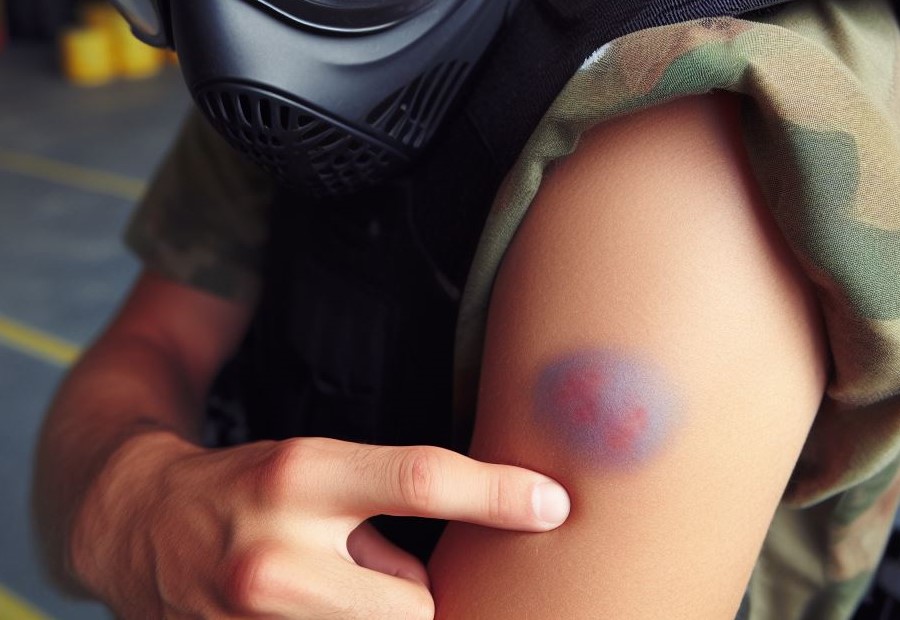
Paintball is a sport with inherent risks, and players face the potential for injuries. It is important to be aware of The Potential for Injuries in Paintball to ensure safety during gameplay.
Common injuries in paintball include bruises, cuts, and welts from the impact of paintballs. Eye injuries can also occur if players do not wear proper protective gear, such as goggles.
While serious injuries are rare, they can occur, including fractures, sprains, and concussions. The risk of injury can be minimized by following safety guidelines, such as wearing the appropriate protective gear, playing in designated areas, and using proper techniques.
It is essential to always be aware of one’s surroundings and communicate effectively with other players to avoid collisions and accidents. Regular inspections and maintenance of equipment can also help prevent malfunctions that may lead to injuries.
Understanding and respecting the potential for injuries in paintball is crucial in order to enjoy the sport safely.
Are Injuries Common in Paintball?
In paintball, injuries are relatively common. Paintball is an active and fast-paced sport, which increases the risk of accidents and injuries.
Players often engage in energetic movements, such as running, diving, and sliding, which can lead to falls and collisions with other players or obstacles. Additionally, players may be hit by paintballs traveling at high speeds, causing bruises, welts, or even more severe injuries.
According to statistics, around 20% of paintball players experience some form of injury during their time playing the sport. The most common injuries in paintball include bruises, sprains, and minor cuts.
However, more serious injuries can also occur, such as fractures, concussions, and eye injuries. These injuries usually occur due to high impact falls or direct hits to vulnerable areas, such as the head or eyes.
To mitigate the risk of injuries in paintball, it is crucial for players to wear appropriate protective gear, including helmets, face masks, and padding.
Following safety rules and guidelines is also essential, as proper behavior and adherence to the rules can greatly reduce the likelihood of accidents. Additionally, playing in a controlled and well-maintained environment can contribute to safer gameplay.
So, while injuries are common in paintball, taking necessary precautions and prioritizing safety can significantly minimize the risks associated with the sport.
What Types of Injuries Can Occur in Paintball?
Paintball is a thrilling and exciting sport, but it is not without its risks. It is important to be aware of the types of injuries that can occur while playing paintball.
- Impact injuries: Paintballs travel at high speeds and when they hit the body, they can cause bruises, welts, and sometimes even broken skin.
- Eye injuries: The eyes are particularly vulnerable in paintball. Direct hits to the eyes can cause serious damage or even vision loss. This is why proper protective gear, including a mask or goggles, is essential.
- Head injuries: Without a helmet or head protection, players are at risk of head injuries from flying paintballs or collisions with obstacles or other players.
- Sprains and strains: Quick movements, running, and diving can lead to sprained ankles, twisted knees, or pulled muscles.
- Heat-related injuries: Playing paintball can be physically demanding, especially in hot weather. Dehydration, heat exhaustion, and even heatstroke are possible risks.
It is important to understand and follow safety guidelines, wear appropriate protective gear, and play within your physical abilities to minimize the risk of these injuries.
Paintball was invented in the early 1980s by three friends who wanted to recreate the thrill of a childhood game called “Capture the Flag.” The first game was played on a small field with simple equipment, but it quickly gained popularity.
Today, paintball has evolved into a professional sport with national and international competitions. Safety measures, such as mandatory masks and protective gear, have been implemented to ensure the well-being of players.
While paintball can be physically challenging and carries inherent risks, it continues to attract enthusiasts who enjoy the adrenaline rush and strategic gameplay it offers.
Factors Affecting the Risk of Injury in Paintball

When it comes to the risk of injury in paintball, there are several key factors that can significantly impact your safety.
In this section, we’ll take a closer look at the role of protective gear and equipment, the influence of the playing environment and field setup, as well as the crucial aspect of player behavior and adherence to safety rules.
By exploring these elements, we can better understand how to minimize the potential risks associated with this exhilarating sport.
Protective Gear and Equipment
When it comes to playing paintball, choosing the right protective gear and equipment is crucial to ensuring your safety on the field. Here are some important factors to consider:
1. Masks: A properly fitted paintball mask is essential for protecting your face and eyes from potential injuries. Look for masks that meet industry standards for impact resistance.
2. Padding: Wearing padded clothing or gear, such as arm pads, knee pads, and chest protectors, can help cushion the impact of paintball hits and reduce the risk of bruises or more serious injuries.
3. Gloves: Quality gloves provide protection for your hands and fingers, which are vulnerable to impacts and paintball hits. Make sure your gloves offer sufficient grip and flexibility.
4. Footwear: Opt for sturdy and supportive footwear with good traction. Paintball involves a lot of running, so having shoes that can provide stability and protect your feet from potential injuries is important.
5. Neck and groin protection: Consider using additional protective gear, such as neck guards and groin cups, to safeguard sensitive areas of your body.
When selecting protective gear and equipment, always prioritize quality and reliability. Choose gear from reputable brands that are known for their durability and adherence to safety standards.
Additionally, make sure you properly maintain your gear to ensure it remains in optimal condition.
Remember, investing in the right protective gear and equipment is essential for minimizing the risk of injuries while enjoying the adrenaline-pumping game of paintball.
Playing Environment and Field Setup
When it comes to playing paintball, the playing environment and field setup play a crucial role in ensuring a safe and enjoyable experience. Here are some important factors to consider:
- Field Layout: Choose a field that has a well-designed layout with appropriate barriers, bunkers, and obstacles. A good field setup will provide ample cover and strategic opportunities for players.
- Obstacle Placement: The placement of obstacles should be thoughtful and balanced. They should be strategically positioned to create interesting gameplay scenarios and ensure fair competition.
- Field Size: The size of the playing field should be appropriate for the number of players and the game type being played. A field that is too small can lead to overcrowding and potential collisions, while a field that is too large may result in players being too far apart to engage in meaningful gameplay.
- Natural Terrain: Utilizing the natural terrain features can enhance the gameplay experience. Hills, trees, and other natural elements can provide additional cover and add an element of realism to the game.
- Maintenance: A well-maintained field with regularly trimmed vegetation, well-maintained structures, and properly maintained equipment ensures a safe playing environment for all participants.
Understanding and considering these factors in the playing environment and field setup will contribute to a positive paintball experience that is both safe and exciting.
Player Behavior and Adherence to Safety Rules
Player behavior and adherence to safety rules are of utmost importance when it comes to ensuring a safe and enjoyable paintball experience.
By following safety guidelines and demonstrating responsible behavior, players can greatly minimize the risk of injuries during gameplay. Engaging in safe player behavior entails properly handling and using paintball markers.
It is crucial for players to always treat their markers as loaded and ready to fire, fully adhering to the rule of never pointing the marker at anything they do not intend to shoot.
Moreover, players must refrain from engaging in reckless or aggressive behavior that could potentially endanger themselves or others. Equally important is the strict adherence to safety rules.
This includes consistently wearing appropriate protective gear, such as masks and padding, throughout the game. Failure to comply with these rules may result in severe injuries, including eye injuries or bruises.
Maintaining a respectful and sportsmanlike attitude towards fellow players is crucial in creating a safe and inclusive environment for everyone involved.
By emphasizing responsible player behavior and unwavering adherence to safety rules, the likelihood of injuries in paintball can be significantly diminished.
Each player bears the responsibility of prioritizing safety and contributing to a positive experience for all participants on the field.
Tips for Preventing Injuries in Paintball
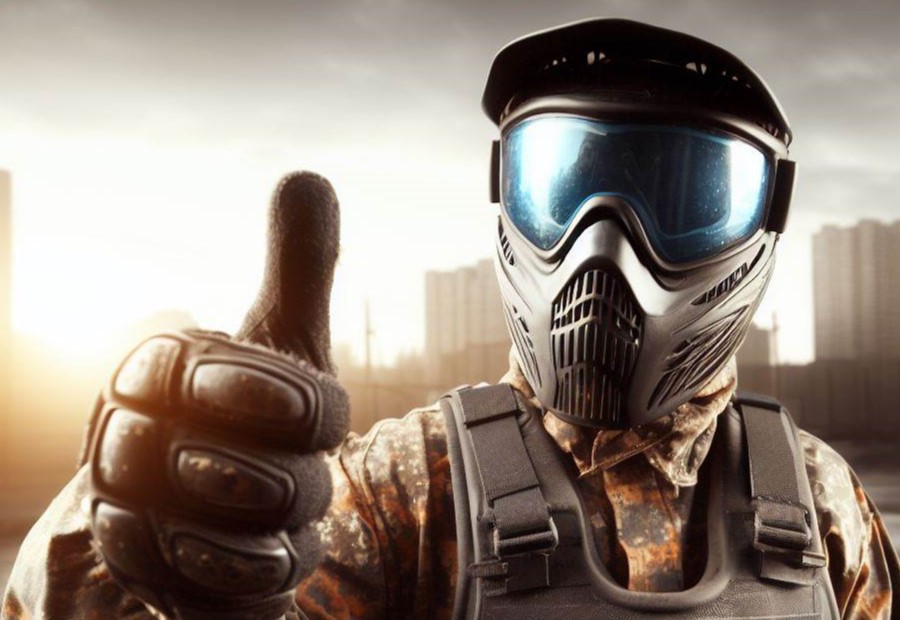
Choosing a Reputable Paintball Facility
When it comes to choosing a reputable paintball facility, there are several factors that should be taken into consideration to ensure both safety and an enjoyable experience.
First and foremost, conducting thorough research is crucial. Take the time to explore and compare different paintball facilities in your area. Look for those with a strong reputation and positive feedback from previous customers.
Safety measures should be a top priority for any reputable paintball facility. Look for establishments that enforce strict safety guidelines and provide the necessary safety gear. Trained staff members are also essential in maintaining a secure environment.
The quality of equipment is another important factor to consider. Make sure the facility uses high-quality paintball gear, including well-maintained markers, masks, and protective gear.
Field conditions play a significant role in the overall experience. Reputable facilities will have well-designed fields that are regularly maintained, ensuring a safe playing surface.
Game variety is also something to look for. A facility that offers a diverse range of game options will cater to different skill levels and preferences, providing a more engaging and enjoyable experience.
Lastly, customer service should not be overlooked. A facility with friendly and knowledgeable staff members who are readily available to assist and answer any questions can greatly enhance your paintball experience.
By carefully considering these factors, you can confidently choose a reputable paintball facility that prioritizes safety, provides quality equipment, and ensures an enjoyable experience for all players.
Proper Use of Protective Gear
When playing paintball, it is crucial to properly use protective gear to ensure safety. Follow these steps to effectively incorporate the proper use of protective gear:
- Wear a helmet: Always wear a properly fitted helmet to protect your head from potential impact injuries.
- Use goggles or masks: It is important to wear goggles or masks with full-face protection at all times. These will shield your eyes, face, and ears from paintball projectiles.
- Wear body armor: To protect your vital organs and joints from bruises or injuries, invest in a sturdy and well-fitting chest protector, elbow and knee pads.
- Gloves: Safeguard your hands and fingers by using durable and padded gloves.
- Choose appropriate clothing: Additional protection from paintball hits can be provided by wearing long-sleeved shirts, pants, and sturdy shoes.
- Secure neck protection: Prevent paintballs from hitting your neck by using neck guards or high collars.
Understanding and Following Safety Guidelines
Understanding and following safety guidelines is crucial when participating in paintball to minimize the risk of injuries. Here are some important safety guidelines to adhere to:
- Wear protective gear: Always wear appropriate protective gear, including a helmet, goggles, face mask, chest protector, gloves, and knee pads. This gear provides essential protection against potential injuries.
- Handle the marker responsibly: Treat the paintball marker, also known as a gun, with caution and respect. Always keep the marker pointed in a safe direction and avoid pointing it at anyone when not playing.
- Follow field rules: Each paintball field may have specific rules and regulations. It is important to carefully listen to and follow these rules to ensure everyone’s safety. This includes guidelines regarding gameplay boundaries, shooting distances, and surrender rules.
- Communicate with teammates: Maintain constant communication with your teammates during games. Use clear and concise verbal cues to avoid accidental injuries or friendly fire incidents.
- Keep your finger off the trigger: Keep your finger off the trigger until you are ready to shoot. This helps prevent unintentional shots and reduces the risk of accidental injuries.
By understanding and following these safety guidelines, you can enjoy the thrilling experience of paintball while minimizing the chance of injuries for yourself and others.
What to Do in Case of an Injury?
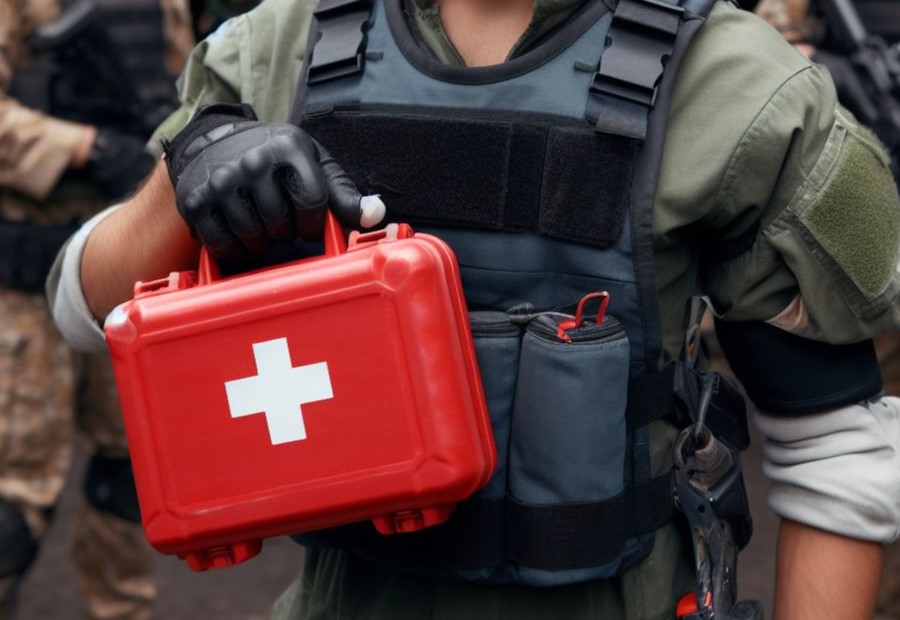
In case of an injury while playing paintball, knowing what steps to take can be crucial. We’ll explore the necessary actions to be taken when faced with such situations.
From understanding common paintball injuries and providing immediate first aid, to knowing when it’s essential to seek professional medical attention, this section will equip you with the necessary knowledge to handle injuries on the paintball field.
Stay prepared and ensure the safety and well-being of yourself and others.
Common Paintball Injuries and First Aid
When participating in paintball, it is crucial to consider common paintball injuries and first aid to ensure the safety and well-being of players.
- One of the most common types of injuries in paintball is eye injuries. Paintballs can cause severe damage to the eyes if proper eye protection is not worn. If someone sustains an eye injury, it is important to immediately seek medical attention and avoid rubbing or putting pressure on the eye.
- Facial injuries, such as cuts and bruises, can occur from being hit by a paintball. Initial first aid for facial injuries includes applying direct pressure to control bleeding and cleaning the wound with clean water and mild soap.
- Head injuries, including concussions, can happen if a player falls or gets hit in the head by a paintball. If a head injury occurs, it is crucial to monitor for signs of concussion, such as dizziness, confusion, or loss of consciousness. Seek medical attention if any concerning symptoms are present.
- Direct impacts by paintballs commonly result in bruises and welts. To reduce swelling and discomfort, applying ice packs or cold compresses to the affected area can be helpful.
Seeking Professional Medical Attention
When it comes to paintball injuries, seeking professional medical attention is crucial. Prompt and appropriate medical care can significantly impact the outcome and recovery process.
It is essential to understand the severity of the injury and take the necessary steps to address it.
- In the case of minor injuries such as cuts, bruises, or sprains, it may not be immediately necessary to seek professional medical attention. However, it is still advisable to consult a healthcare professional to ensure proper treatment and prevent complications.
- For more serious injuries like fractures, head injuries, or eye injuries, it is paramount to seek immediate medical attention. These injuries require specialized care and medical expertise to avoid long-term damage and ensure proper healing.
- When seeking professional medical attention, following the advice and instructions provided by healthcare professionals is important. They will assess the injury, provide appropriate treatment, and guide you through the recovery process.
Frequently Asked Questions
Can you get injured playing paintball?
Yes, playing paintball comes with a risk of injuries, ranging from minor cuts and bruises to more severe injuries.
What factors determine the pain experienced in paintball?
The severity of pain experienced in paintball depends on factors such as the speed of the ball, the distance it travels, and where it hits on the body.
Are consecutive shots in paintball painful?
Taking multiple consecutive shots in paintball can be painful, but it is rare to experience this in a game.
What body parts are more sensitive to pain from paintball hits?
Body parts with less “meat,” such as the hand or the back of the head, tend to be more sensitive to pain from paintball hits.
What safety equipment can prevent paintball injuries?
To avoid paintball injuries, it is important to wear appropriate safety gear such as Bolle Cobra safety goggles to protect the eyes and an Empire Helix thermal mask that covers the ears.
What are the common injuries associated with paintball?
Common injuries in paintball include eye injuries such as cornea scratches and detached retinas, ear injuries like tinnitus or a ruptured eardrum, and head injuries resulting in bruises and bleeding.

